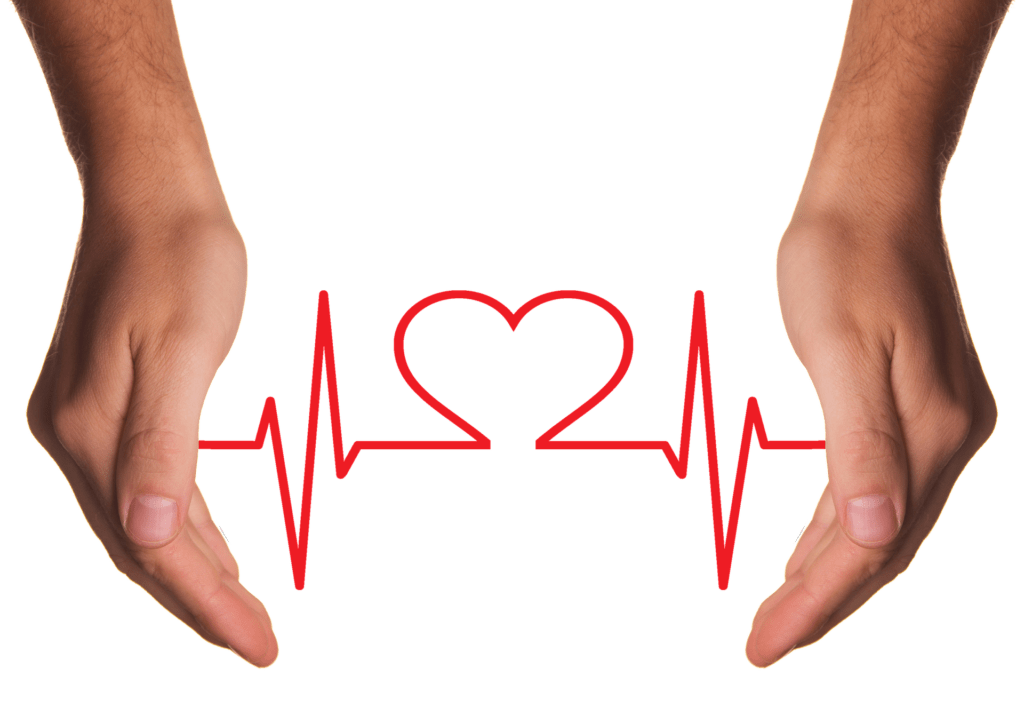Many of us know at least one person—or maybe more—who works within the healthcare industry. The role of nursing is an essential part of this field, too. If you have been in a hospital or received treatment at another healthcare facility, then a nurse may have been your main point of contact there. Nurses also play a crucial role in treating patients with COVID-19 and helping to contain the current global pandemic.
Technological innovations are a crucial part of healthcare, and nurses at the frontline will use these developments to treat you—the patient. So, what is happening now, and how are nurses a part of this?
These are some of the significant technological developments that nurses are using now, which will help them to take care of us when in their charge and aid them in their duties on each shift. Not only will it improve what service they can provide, but it also boosts the end results of those who they look after.
Using data for better diagnoses
Using big data lets nurses and doctors create personalized treatment options, which are then supported by current research and statistics. Seattle Children’s Hospital, for instance, has used big data analytics to get faster, more accurate diagnoses for its patients.
This system uses many data points from each patient to help diagnose a condition and list options to treat it almost instantly. Previously, this may have taken days or weeks to complete – and may not have been as accurate.
Cloud-based data access
There is a move towards cloud-based data management systems for innovative healthcare systems, and away from keeping separate charts and systems for each patient and department. Such cloud programs mean patient data is held on a single system that can be accessed from anywhere – and instantly. Nurses and other healthcare providers can then get all the details they need about a patient and share it easily with other care team members, rather than having to go through several different systems.
Scheduling and staffing
There are scheduling solutions available that are focused on the needs of nurses. One example is NurseGrid, which was founded in 2013: here, nurses can let hospital managers know that they are either available for extra work or they are not looking for shifts.
There are other nurse scheduling programs available. However, NurseGrid was developed as a mobile app rather than as online software. It also shows real-time shift changes; other programs have a focus on building schedules and timekeeping.
Blood sugar monitoring
Nurses have a significant workload to deal with on each shift. Because their time is valuable, they are better placed to carry out other tasks rather than manually doing glucose and blood tests.
A chip developed by Admetsys will monitor a patient’s blood sugar levels in real-time. The artificial intelligence algorithm will then trigger the administration of either glucose or insulin through the patient’s IV drip, which is connected to a screen, showing the patient’s metrics.
Finding veins
A tool called EchoNous View helps nurses to insert peripheral IV catheters for patients by showing a clear, quick image of someone’s veins. The settings on the device can be optimized so it can be used on both adults and children (pediatrics).
Nurses are only too aware of how important it is to find a vein quickly. A failed IV insertion can hold up care from the start of the process and affect a patient’s satisfaction survey. So, this vein-finding tool helps to reduce these ‘hard sticks’ and boost satisfaction, as stated by EchoNous’s CEO Kevin Goodwin.
You may find that you learn about some of these technological treatment innovations through further nursing education. If you’re a nurse and want to find out more about the latest developments, then you may wish to sign up to accelerated BSN programs or other training for your role – so you can find out how to better care for your patients.
Remote healthcare
Technological advances mean there’s real-time, remote monitoring and investigations available within the healthcare sector. Using these items means they can ultimately influence treatment plans and diagnoses for individual patients.
For instance, there are medical devices such as the Implantable Loop Recorder that detect heart rhythm disturbances. This activity can be relayed to a central monitoring team, which can lead to diagnoses and – potentially in future – immediate emergency response.
Taking blood tests at home is possible, too. As well as well-known tests that include blood glucose and pregnancy, patients can also check levels for cholesterol, hepatitis C, prothrombin time, and a few drug tests.
There are also consumer devices that can track someone’s vital signs and activity. These include wearable items that look at a person’s movements, as well as their heart rate.
Nurses have created many developments, too
There have been some innovations within the healthcare industry that were created by nurses. The founder of modern medicine, Florence Nightingale, put in place the hygiene protocols that are common today. Her writings about successes, including improving the conditions at a British hospital during the Crimean War, initiated worldwide healthcare reform.
In the 1940s, nurse and physical therapist Bessie Blount Griffin made breakthroughs in assistive technology. Many WWII veterans returned home as amputees, who then struggled to carry out basic tasks on their own. Bessie invented a tube where individual morsels of food were delivered at their pace – users just had to bite on the tube to get the next bite.
Sister Jean Ward was behind the innovation of neonatal phototherapy. Sister Jean, who was the nurse in charge of a premature unit in the 1950s, would take infants into the hospital courtyard; doctors noticed the skin of jaundiced babies faded during these outings, leading physicians and biochemists to show bilirubin levels fell in infants when exposed to artificial light.
More recently, in 2013, UK community nurse Neomi Bennett designed the Neo-slip: a pouch that helps to prevent friction and aid patients in putting on socks. Neomi found many of her patients did not use compression socks, which help prevent deep vein thrombosis because they were too difficult to put on.
Nurses are critical for effective healthcare, and technology can play an important role. The right technology enables nurses to be more effective and efficient and acts as a force multiplier to enable them to treat more patients with a higher overall quality of care.
- Review: Stellar Converter for OST - March 19, 2024
- High-Level Guide to Boosting PC Speed - February 19, 2024
- The Evolution of Digital Platforms: How 5G is Revolutionizing User Experience - February 5, 2024




Pingback: Techspective: How Technology Helps Nursing And Healthcare – US Tech Future
Pingback: The Benefits of Medical Professional Visit Scheduling Software Application That Can Assist You – What Shopuld A Pc Cost Per Month In It Managed Services
Pingback: Medical Care Workforce Management Software Application Has Actually Changed The Method Health Care Carriers Handle Their Workforce – The Journey of McClure 558
Pingback: Just How Health Care Labor Force Management Systems Market Produces Opportunities And Also Obstacles? – The Love of Randolph 098
Pingback: Healthcare Labor Force Monitoring Software Application Is Ideal For Small Hospitals As Well As Long-Term Treatment Facilities Which Have Actually Restricted Staff Scheduling Resources – The Journey of Lang 657
Pingback: Medical Care Workforce Administration Software Program Has Changed The Way Healthcare Suppliers Handle Their Labor Force – The Journey of Cramer 055
Pingback: Healthcare Workforce Administration Software Program – The New Approach Of Time And Participation Scheduling – The Life of Gomez 334
Pingback: Health Care Workforce Monitoring Software Application Has Transformed The Means Healthcare Companies Manage Their Workforce – The Life of Russo 293
Pingback: What Are The Functions Of Health Care Workforce Administration Software Program? – The Blogging of Osborne 689
Pingback: Here The Information Introduction Of Just How To Use Medical Care Labor Force Management Software – The Love of Wiley 037
Pingback: Here The Detail Overview Of Just How To Use Medical Care Labor Force Monitoring Software Program – The Journey of Adcock 381
Pingback: Below The Detail Review Of Exactly How To Use Health Care Workforce Management Software Application – The Life of Guzman 856
Pingback: Medical Professional Scheduling Software Program Has Vital Ramifications For The Practice As Well As For Its Personnel – The Blogging of Chaney 000
Pingback: Medical Professional Scheduling Software Program Benefits Both Physicians And Also Personnel Members – The Journaling of Salas 411
Pingback: Physician Organizing Software Application Conveniences Both Physicians And Personnel Members – The Love of Riise 181
Pingback: Hipaa Compliant Physician Scheduling Software Program – Secret Features – The Journaling of Avila 982
Pingback: What Are The Advantages Of Health Care Labor Force Administration Software? – The Journey of Parks 539
Pingback: Doctor Organizing Software Application – Is This A Better Means To Handle Your Staff? – The Journaling of Harris 794
Pingback: Right Here The Information Summary Of Exactly How To Use Health Care Workforce Management Software – The Journaling of Jacobsen 474
Pingback: Medical Professional Scheduling Software Application Benefits Both Physicians And Also Team Members – The Love of Saunders 779
Pingback: Doctor Organizing Software Application Has Essential Ramifications For The Technique As Well As For Its Team – The Blogging of Kring 854
Pingback: Doctor Organizing Software Program Benefits Both Physicians As Well As Staff Members – The Journaling of Bentsen 933
Pingback: Doctor Organizing Software Application – Boost Efficiency And Receive Less Patients! – The Love of Devine 612
Pingback: Among The A Lot More Forgotten Yet Potentially High-Impact Modifications Healthcare Facility Systems Can Make Is Changing Medical Professional Scheduling Software – The Blogging of Kragelund 502
Pingback: One Of The Extra Overlooked But Potentially High-Impact Alterations Hospital Systems Can Make Is Changing Physician Scheduling Software Application – The Blogging of Junker 981
Pingback: What Are The Benefits Of Health Care Labor Force Administration Software? – The Blogging of Kristiansen 298
Pingback: Exactly How Healthcare Workforce Management Is Using Real-Time Software Application For Reliable Staff Organizing? – The Journaling of Soto 247
Pingback: Hipaa Compliant Doctor Scheduling Software – Secret Features – The Journaling of Alford 729
Pingback: Among The Extra Overlooked But Possibly High-Impact Alterations Healthcare Facility Systems Can Make Is Changing Physician Scheduling Software Application – The Life of Vega 169
Pingback: Physician Scheduling Software Program Perk Both Physicians As Well As Personnel Members – The Journaling of Turan 087
Pingback: Below The Information Summary Of Exactly How To Use Health Care Labor Force Monitoring Software Application – The Journaling of Leblanc 437
Pingback: Advantages Of Using Physician Organizing Software – The Blogging of Bauer 204